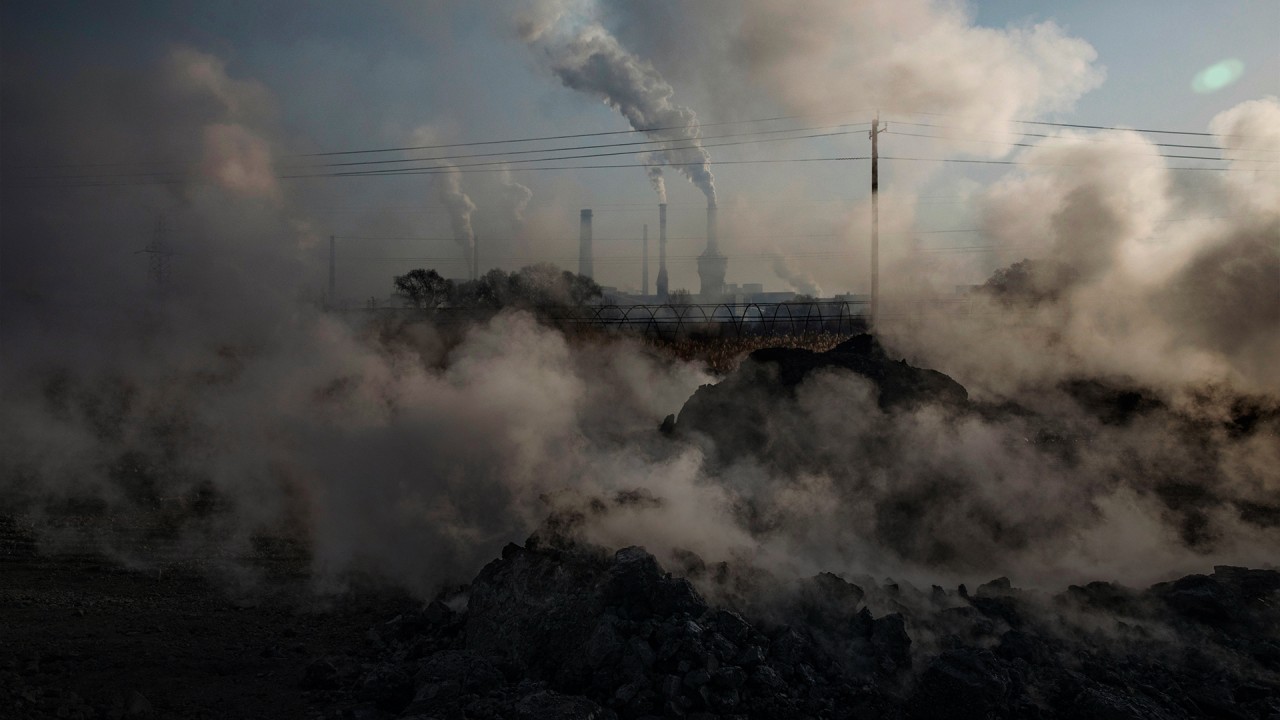
China’s carbon neutral goals: turnover under emissions trading scheme expected to reach US$15 billion in 2030
- The expectations of an increase in volume came after China’s new carbon market met its first compliance deadline with a high compliance rate of 99.5 per cent
- About 8 billion yuan worth of carbon trading has been recorded since the national carbon exchange was launched in Shanghai mid July
“The basic framework of the national ETS has taken shape, and the price determination mechanism has taken effect,” said Liu Youbin, the spokesman for China’s ministry of ecology and environment (MEE). In the next step, the MEE will focus on improving relevant laws and technical specifications, he said.
The expectations of an increase in volume came after China’s new carbon market met its first compliance deadline with a high compliance rate of 99.5 per cent. The national ETS, which covers 2,162 firms from the power sector with total annual carbon dioxide emissions of 4.5 billion tonnes, completed its first compliance period on December 31, after its official launch in July last year.
Almost all trading companies have surrendered at least an equivalent number of carbon emission allowances (CEA) – which they can buy or trade under the scheme – for actual emissions in 2019 and 2020.
Transaction volumes are expected to hit the 100 billion yuan mark by 2030, the same year China is targeting to peak its total carbon emissions, according to a report published last month by the Center for Energy and Environment Policy Research at Beijing Institute of Technology. About 8 billion yuan worth of carbon trading has been recorded since the national carbon exchange was launched in Shanghai mid July.
The scheme is also going to undergo several upgrades, allowing enterprises from two more sectors – building materials and non-ferrous metals – to participate in trading this year. It will also relaunch registration under the China Certified Emission Reduction (CCER) scheme, its carbon offset plan.
A total of 179 million tonnes of CEAs changed hands during the 114 trading days of 2021, according to MEE. The price of a CEA settled at 54.22 yuan per tonne on the last trading session on December 31, up 13 per cent from the first trading day on July 16.
The top priority for the national ETS in 2022 is to expand its scope of industry coverage and trading entities to boost its liquidity, according to government officials.
Currently, the scheme only allows trading by polluters from the power sector, which covers 40 per cent of China’s total emissions. But emitters from the non-ferrous metals and building materials sectors could be added to the national ETS this year, said Lai Xiaoming, chairman of the Shanghai Environment and Energy Exchange, which oversees the national ETS.
The scheme will also roll out derivative products, including swaps, forwards and options, as well as open to financial institutions, as part of efforts to grow liquidity, Lai said.
In addition, China could also accelerate the process of levying a carbon tax to work along with the national ETS to achieve its 2060 net-zero emissions goal, according to the Center for Energy and Environment Policy Research’s report.
A new higher-level ETS regulation is also expected to be released in the first quarter of 2022 by the State Council, according to Lin Yuan, lead China analyst at Refinitiv.
“The new State Council-level ETS regulation, when effective, will replace the current ETS management measures, which entered into force in February 2021, and elevate the legislation and enable higher penalties for non-compliance and tighter enforcement,” Lin said.
China could also drastically tighten the ETS benchmark to push power entities to achieve their energy efficiency targets, according to analysts. China’s national ETS uses carbon-intensity benchmarks, rather than the absolute emissions caps used by the European ETS, to distribute carbon allowances.
A lower ETS benchmark will reflect an improvement in the efficiency of the coal fleet and counteract the excess allowance in the first compliance period, according to Refinitiv. It expected China to lower its benchmark this year by 5 to 8 per cent of current levels, which will also help drive up the carbon price.
The expected further progress in China’s power sector reform, following the liberalisation of coal tariffs last October, will also help power sector emitters in the ETS feel more comfortable with the rising carbon price, according to analysts.
To ease the power shortage last fall, China allowed coal-fired power tariffs to fluctuate 20 per cent above or below the power tariff benchmark and even higher for energy-intensive industries. More flexible power pricing will smooth the pass-through of carbon allowance costs from generators to the price of power, which has been limited due to China’s fixed tariffs previously.
“The wider deployment of marginal cost-based power price will also enhance the pass-through of carbon costs, making thermal producers less ‘hostile’ to the ETS, especially to the increasing carbon price,” said Lin from Refinitiv.




